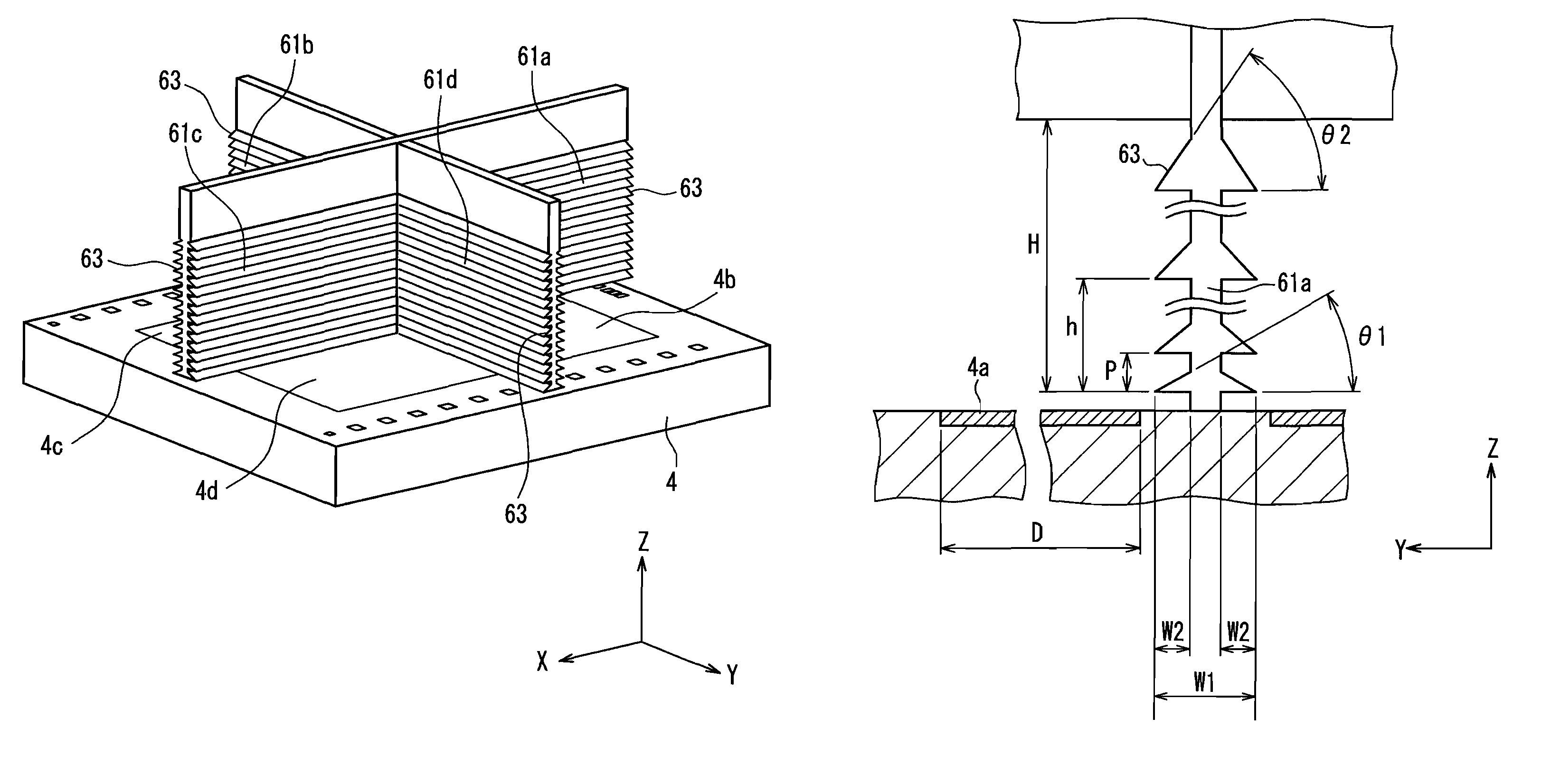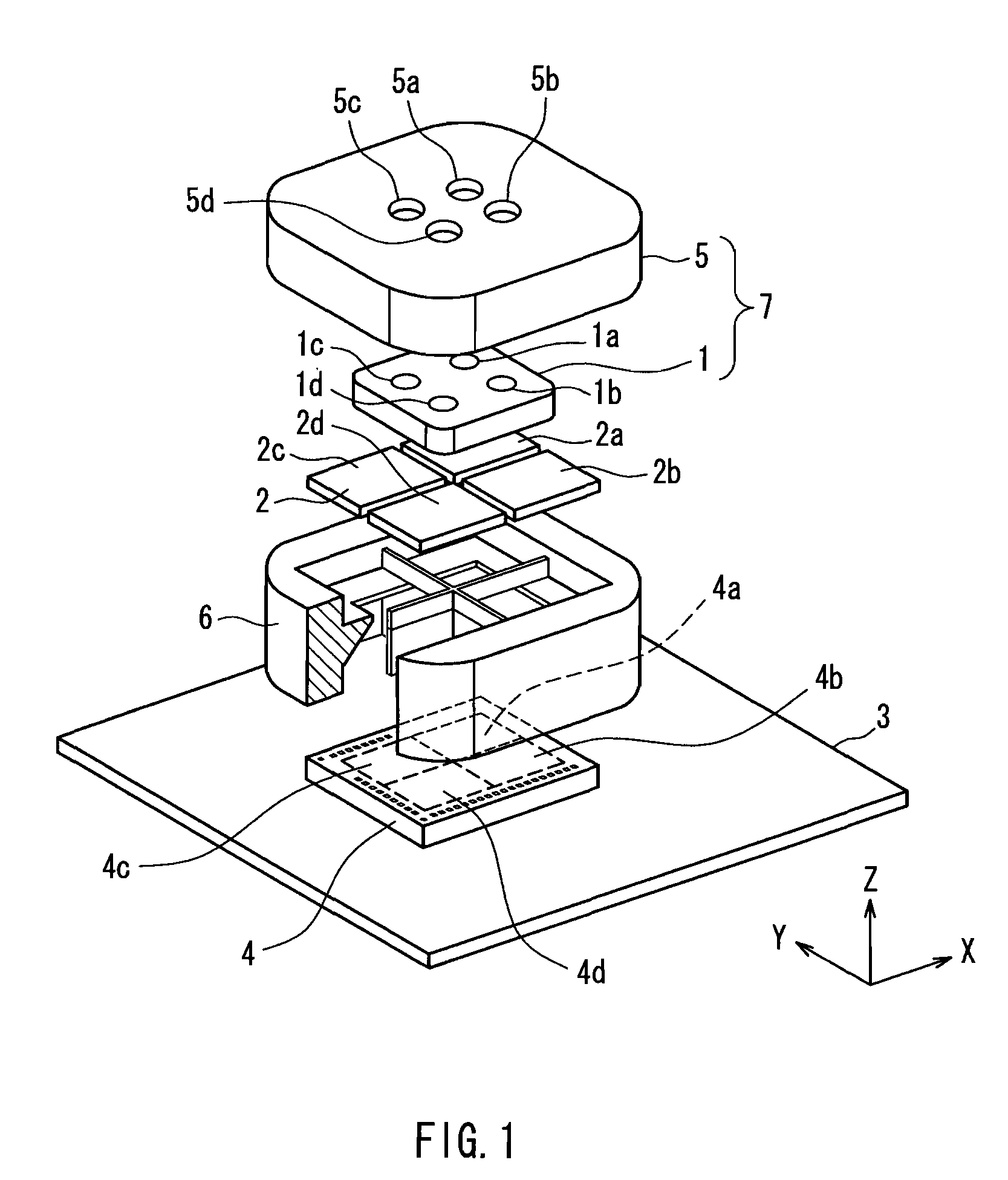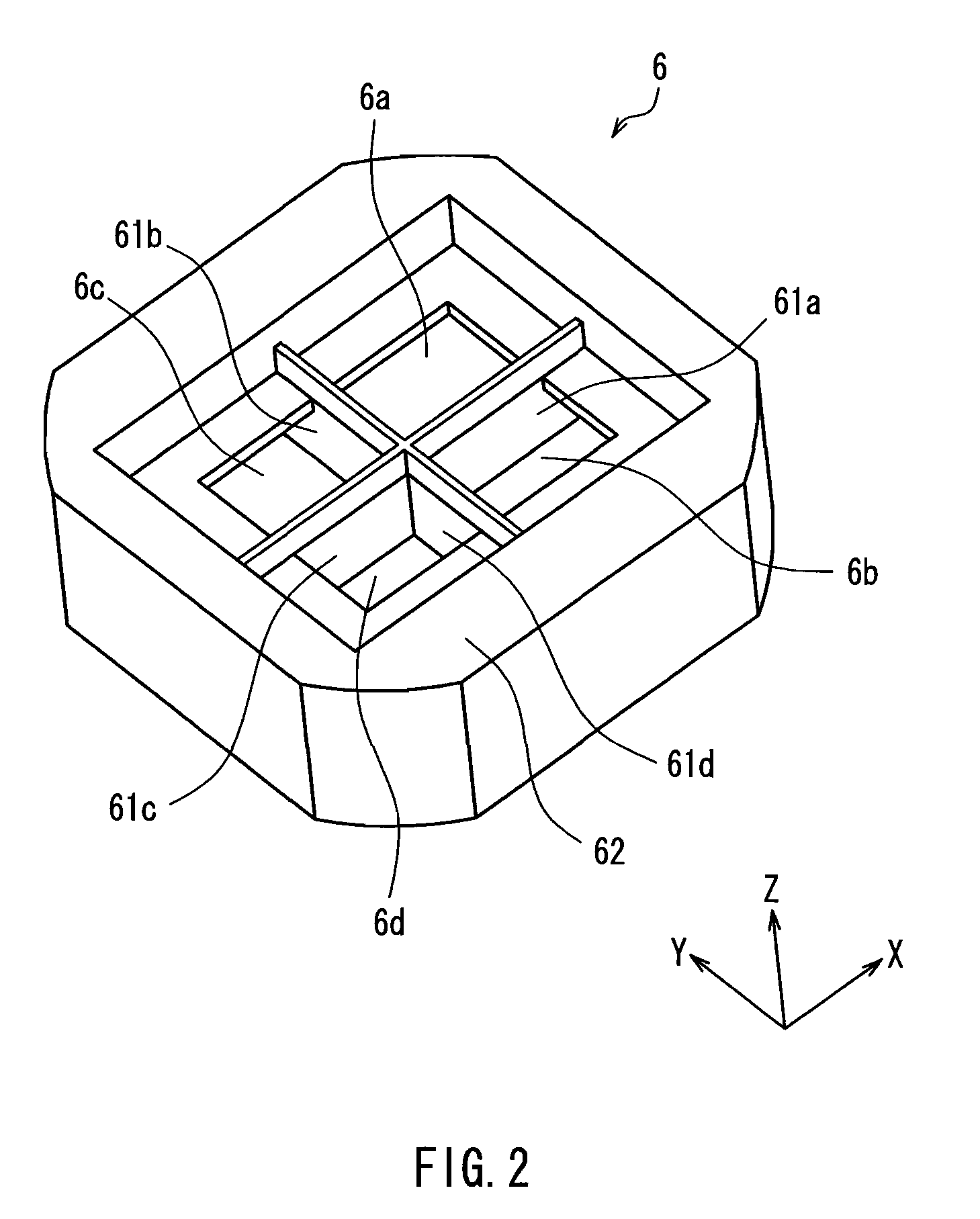Compound eye-camera module
a camera module and compound technology, applied in the field of small-scale thin camera modules, can solve the problems of limited light wavelengths to which individual lenses are devoted, and unnecessarily large number of reflected images, so as to prevent unwanted incident light from being reflected small and low-cost
- Summary
- Abstract
- Description
- Claims
- Application Information
AI Technical Summary
Benefits of technology
Problems solved by technology
Method used
Image
Examples
embodiment 1
FIG. 1 is an exploded perspective view showing a compound-eye camera module according to Embodiment 1 of the present invention. In FIG. 1, numeral 1 denotes a lens array, numeral 2 denotes an optical filter array, numeral 3 denotes a substrate, numeral 4 denotes an imaging device, numeral 5 denotes an upper barrel, and numeral 6 denotes a light-shielding block.
For the convenience of description, an XYZ rectangular coordinate system as shown in the figure is set. The Z axis is an axis that passes through a substantial center of an effective pixel region of the imaging device 4 and is perpendicular to the effective pixel region. The Z-axis direction also is an optical axis direction of each of lenses forming the lens array 1. The X axis is an axis that is perpendicular to the Z axis and parallel with light-shielding walls 61a and 61c, which will be described later, of the light-shielding block 6. The Y axis is an axis that is perpendicular to the Z axis and parallel with light-shieldi...
embodiment 2
In the following, Embodiment 2 of the present invention will be described, with reference to FIGS. 5A and 5B. FIG. 5A shows light rays in a compound-eye camera module according to Embodiment 2 of the present invention. Similarly to FIG. 3, this figure corresponds to the figure showing light rays at a cross-section along the YZ plane passing through the lenses 1a and 1b of the camera module of FIG. 1. FIG. 5B is an enlarged view showing a portion of a light-shielding wall in FIG. 5A.
The present embodiment has a similar configuration to Embodiment 1 except for an inclination angle of the inclined surfaces of the light-shielding wall. Thus, individual structures are assigned the same reference numerals as those in Embodiment 1, and the redundant description thereof will be omitted.
In FIGS. 5A and 5B, similarly to Embodiment 1, the light-shielding walls 61a to 61d are provided perpendicularly in the Z direction that is substantially perpendicular to the imaging plane. The configuration ...
embodiment 3
In the following, Embodiment 3 of the present invention will be described, with reference to FIG. 6. FIG. 6 is a perspective view specifically showing an imaging device and light-shielding walls in a compound-eye camera module according to Embodiment 3. This figure corresponds to FIG. 4 in Embodiment 1. The present embodiment has a similar configuration to Embodiment 1 except for the configuration of the inclined surfaces of the light-shielding walls. Thus, structures that are the same as those in Embodiment 1 are assigned the same reference numerals, and the redundant description thereof will be omitted.
The configuration of FIG. 6 is different from that of FIG. 4 in Embodiment 1 in the inclined surfaces. In the configuration of FIG. 4, each of the inclined surfaces 63 is formed continuously in the X direction or the Y direction along the light-shielding wall. In contrast, in the configuration of FIG. 6, each of the inclined surfaces is separated into a plurality of blocks 64, and t...
PUM
 Login to View More
Login to View More Abstract
Description
Claims
Application Information
 Login to View More
Login to View More - R&D
- Intellectual Property
- Life Sciences
- Materials
- Tech Scout
- Unparalleled Data Quality
- Higher Quality Content
- 60% Fewer Hallucinations
Browse by: Latest US Patents, China's latest patents, Technical Efficacy Thesaurus, Application Domain, Technology Topic, Popular Technical Reports.
© 2025 PatSnap. All rights reserved.Legal|Privacy policy|Modern Slavery Act Transparency Statement|Sitemap|About US| Contact US: help@patsnap.com



